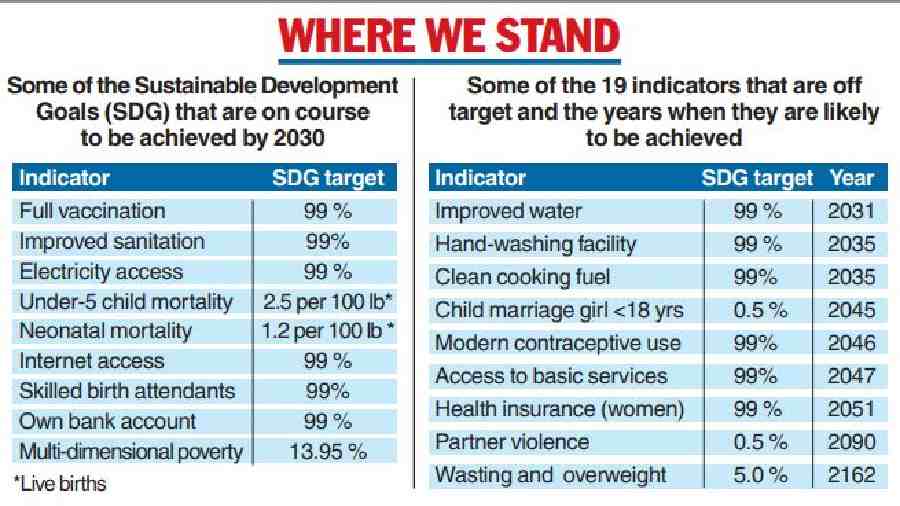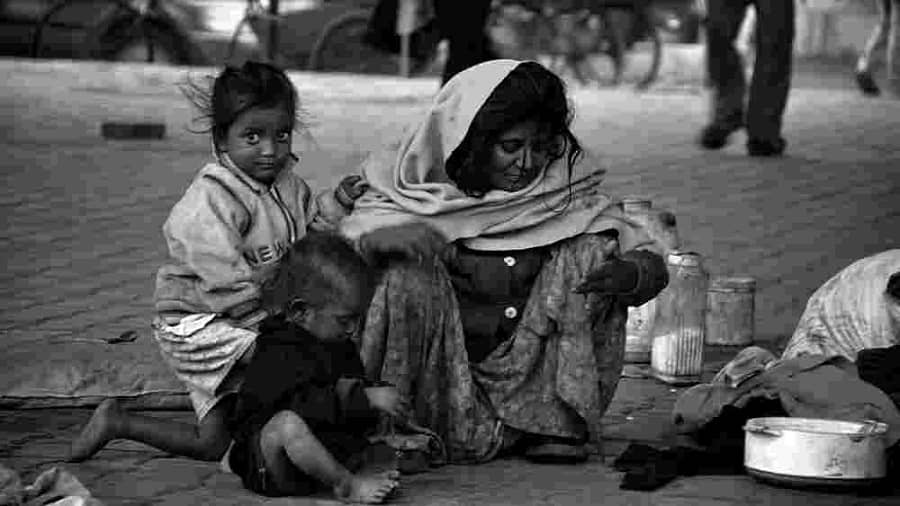India is “off target” for 19 of 33 so-called indicators of Sustainable Development Goals (SDGs) relating to poverty, hunger, health and gender inequality, says a study that has also flagged a worsening anaemia trend from 2016 to 2021.
The study, which covers 707 districts, has found that in 2021, over 75 per cent of the districts were off target on key indicators such as access to basic services, anaemia, poverty, stunting in children, child marriage and partner violence.
The findings suggest that if India continues to progress at the same pace as during 2016-2021, it will take the country years or even decades after the 2030 target to achieve some of the SDG indicators.
For instance, the goals relating to improved water will be achieved by 2031, those on access to basic services by 2047, and those relating to partner violence by 2090.
The SDGs are a broad set of objectives defined by the UN in 2015. They represent improvements in economic development, social welfare and environmental sustainability that are to be achieved by 2030 and have been agreed on by 195 countries, including India.

“Our study provides scope for policymakers to undertake course corrections,” said S.V. Subramanian, a professor of population health at Harvard University who led the study. It was published earlier this week in The Lancet, with co-authors from India and South Korea.
Ernakulam (Kerala) and Lakshadweep have already achieved the targets relating to 13 indicators, the highest by any district. Sixty-one districts, largely located in Kerala, Tamil Nadu, Arunachal Pradesh and Punjab, have achieved the targets on 9 to 13 indicators.
Two of the off-target indicators — which means they are unlikely to be achieved by 2030 at the current pace — are anaemia in women, which worsened from 51 per cent in 2016 to 56 per cent in 2021, and stunting in children.
The districts with the most off-target indicators — 27 — are Bijapur (Chhattisgarh), East Jaintia and West Khasi Hills (Meghalaya), and Sepahijala (Tripura).
Ninety-six districts, mainly in Maharashtra, Bengal, Bihar, Jharkhand, Meghalaya and Chhattisgarh, are off target on 22 to 26 indicators.
A majority of districts are off-target on SDGs linked to “no poverty,” “zero hunger,” “good health,” and “gender inequality” despite existing programmes or schemes in place to address these goals. Examples are the Pradhan Mantri Awaas Yojana (to deliver affordable housing to the poor), the Pradhan Mantri Sahaj Bijli Har Ghar (to provide universal household electrification), or the Jal Jeevan Mission (to provide safe adequate tapped drinking water).
The Narendra Modi government launched the Beti Bachao Beti Padhao (to curb sex selective abortions and promote girls’ education) campaign in 2015 and the Mahila Shakti Kendra initiative to promote skill development and employment of women in 2017.
The study has projected that India will meet the SDG target on gender inequality by 2090 and for one-third of districts, this goal will not be met “in the foreseeable future,” the researchers said.
“The findings point to a need to understand why some current policies aren’t working,” said William Joe, assistant professor at the Population Research Centre, Institute of Economic Growth, New Delhi, and a study co-author.
Subramanian and his collaborators analysed the SDG indicators through datasets from two National Family Health Surveys – those carried out in 2015-2016 and 2019-21. Both surveys covered a sample of 2.8 million people from districts across the country.
But a population scientist at the International Institute of Population Sciences, Mumbai, said that NFHS datasets might not be the best way to assess progress on SDG indicators.
“There are limitations in the NFHS data, which might not provide the complete picture,” said Sanjay Mohanty, professor and head of population and development at the IIPS.
Mohanty and other health experts have also questioned the anaemia and stunting data in the NFHS.











